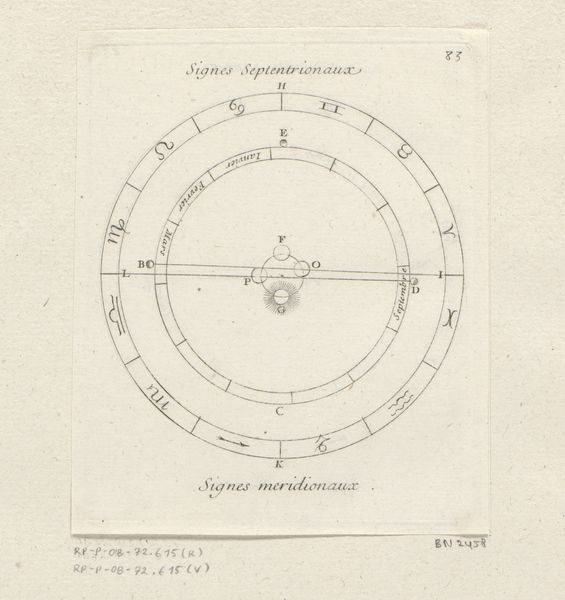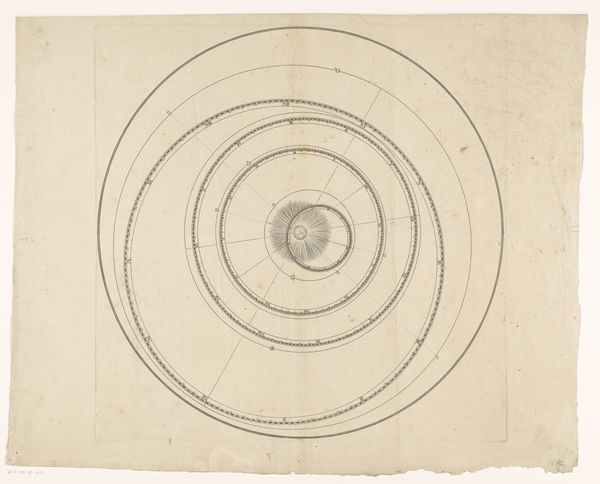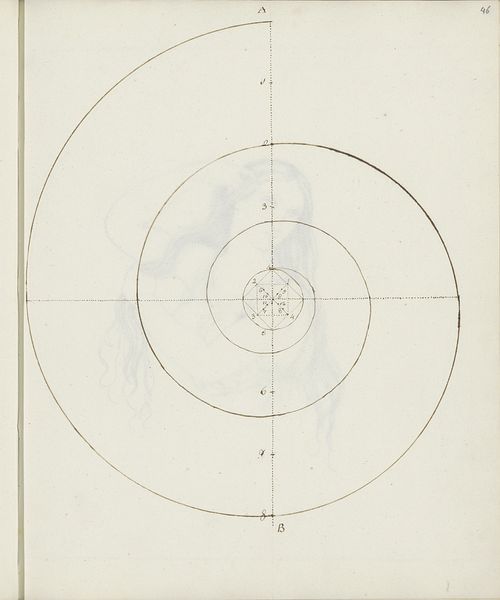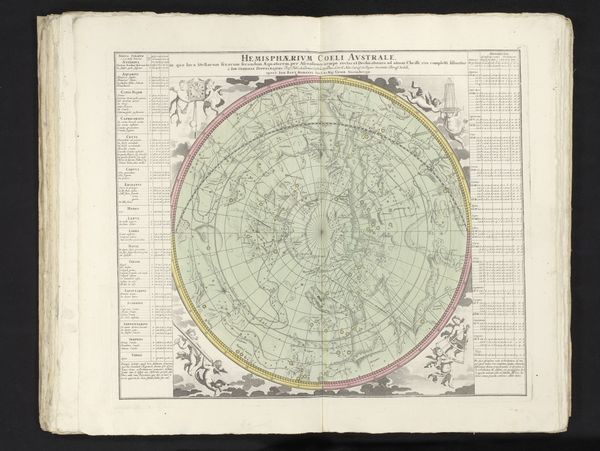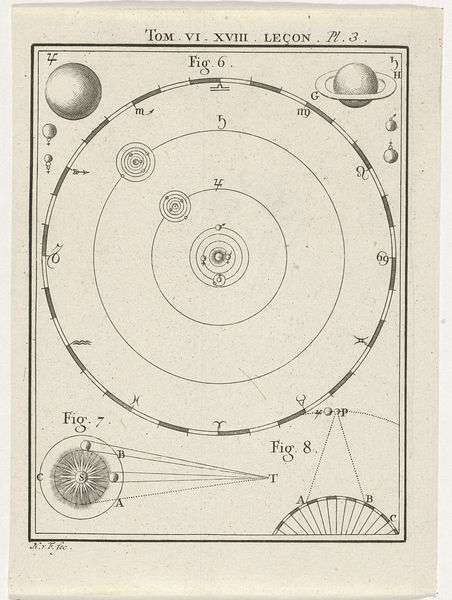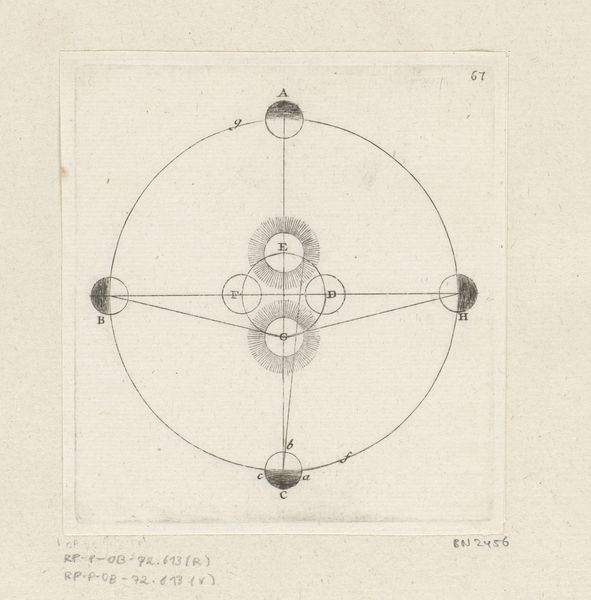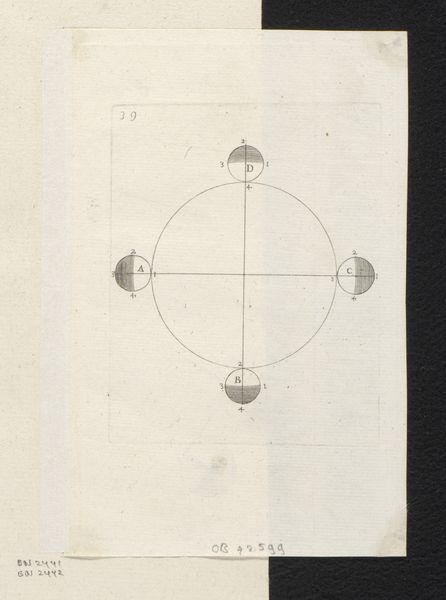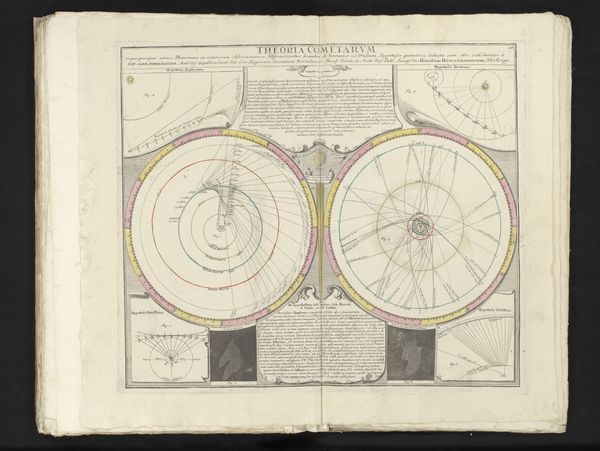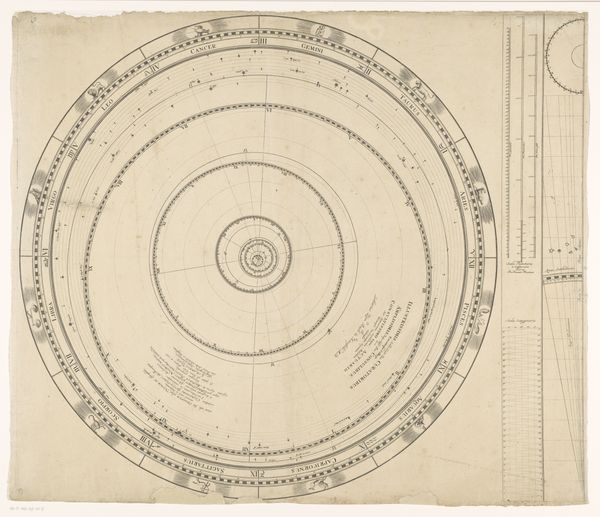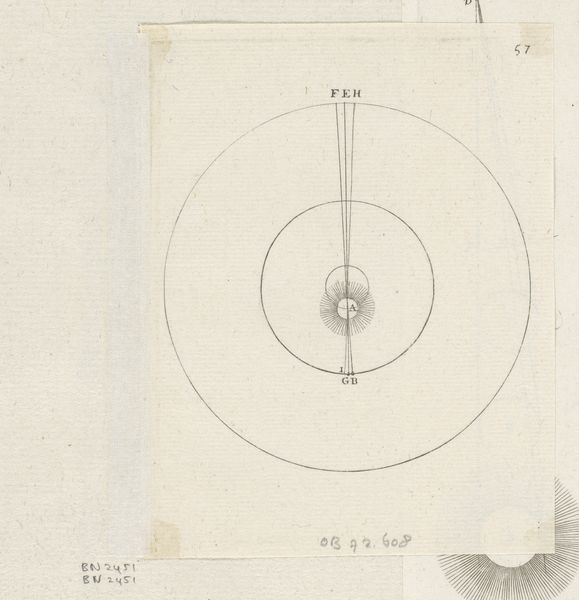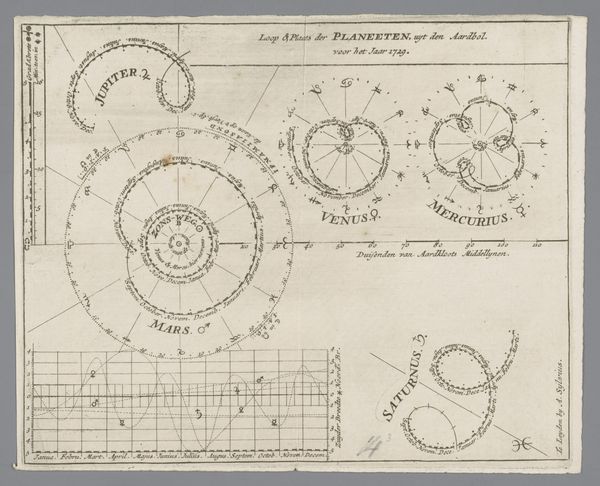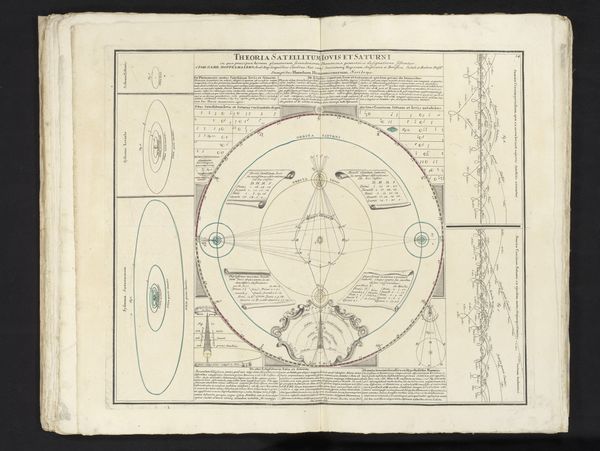
drawing, paper, ink
#
drawing
#
paper
#
ink
#
geometric
#
watercolour illustration
#
history-painting
#
watercolor
Dimensions: height 322 mm, width 238 mm
Copyright: Rijks Museum: Open Domain
Curator: "Zonnestelsel," or "Solar System," is a drawing made with ink on paper by Jan Brandes in 1792. Looking at it, I'm reminded of how humans have strived to map the heavens throughout history. Editor: It’s making me strangely emotional! There's something about seeing a system we now understand with such sterile precision, depicted in this handmade way, with visible calculations and corrections, that hints at this deeper longing. Curator: Indeed. The careful rendering of planetary orbits and astrological symbols speaks to an era steeped in both scientific curiosity and cosmological understanding. Notice the central sun rendered almost like a radiating flower? That invokes powerful imagery, tying into solar worship motifs across various cultures. The handwritten text shows numerical relations that make it seem a record, rather than only an observation. Editor: It's so intimate and personal compared to modern representations of our solar system. This isn't just information; it's knowledge filtered through a particular mind, hand, and emotional experience. Plus, those almost haphazard corrections, they make it honest! I can imagine the artist's quill scratching away… a true dance with knowledge. It has real appeal in the age of flawless digital production. Curator: Precisely! It reflects a pivotal point in intellectual history when empirical observation was intertwined with symbolic interpretation, with science not divorced from artistic endeavors. What cultural touchstones do you glean here? What myths of the constellations or celestial events were invoked at the time this was created? It suggests an active intersection with the cultural discourse and symbolic meaning associated with space. Editor: For me, it triggers a memory of childhood wonder—spread out on my bedroom floor with those old astronomy textbooks, mapping stars and plotting impossible journeys. It's not cold data; it's an invitation to dream. You mentioned cultural memories; what psychological resonance is inherent to mapping the stars, trying to position ourselves within a vast unknown? Curator: Absolutely, the artwork speaks to humanity's endless need to situate itself within the grand scheme of existence. The act of mapping the heavens implies order and control, or at least, the desire to perceive that where one may not innately exist. It reflects deeper psychological motivations associated with conquering our fears. Editor: So, from celestial mapping to human mapping... it certainly gets one contemplating! I’m going away wanting to lie on my back to look up, chart something impossible, and get delightfully lost. Curator: It leaves me pondering the future—where our current, extremely complex ways of recording observations and scientific advancement will fall flat and give rise to this similar sense of sentimental regard that we bestow on "Zonnestelsel".
Comments
No comments
Be the first to comment and join the conversation on the ultimate creative platform.

